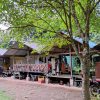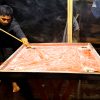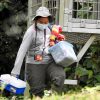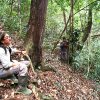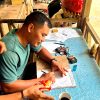Sumatra: 24 Hours At The Jantho Release Station
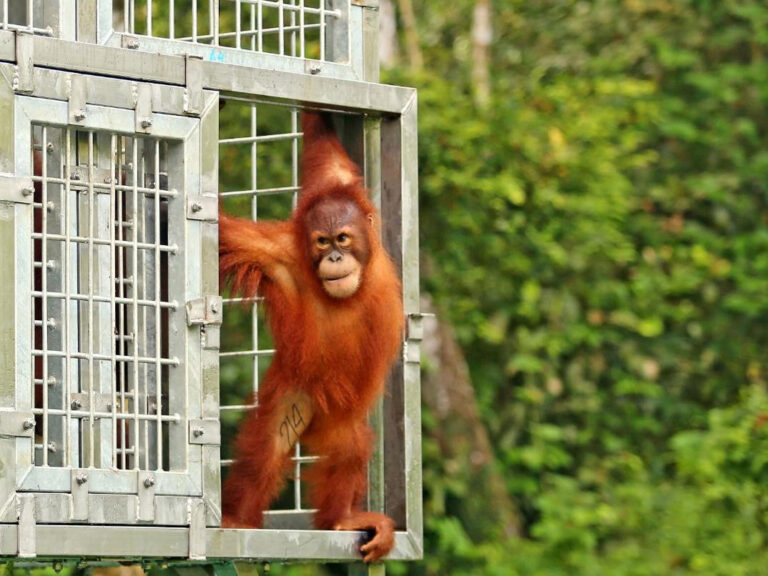
May 6, 2025 – Story by PanEco
Since 2011, SOCP has been operating a release center for orangutans in the Jantho Conservation Area in northern Aceh Province (Sumatra, Indonesia). They spend their final weeks there before being released into their natural habitat. What do the days look like for the team?
A row of houses in the middle of the forest
The reintroduction station is located deep in the rainforest, about a two-hour, grueling drive in an off-road vehicle from the edge of the Jantho Pine Forest Nature Reserve. In the case of heavy rain or a car breakdown, it can take several hours longer. Around 15 staff members are stationed here every day of the year, each with a variety of tasks. The station consists of seven adjoining houses. A covered veranda connects them at the front, and a covered path leads to the washrooms and storage areas at the rear. There are two common rooms, a kitchen and a dining room, bedrooms for the team and guests, and a room for the veterinarians. A few covered shelters provide dry shelter for the off-road vehicles and motorcycles used by the staff to arrive. Life is very simple; there is solar power and running water, but no internet connection.
10 days shift, 5 days off
Each shift at the station includes a station manager, a veterinarian, a cook, a driver, and the post-release monitoring team, which monitors the orangutans after their release into the wild. Because the journey is extremely arduous and the days begin early in the morning and end at night, the staff always stay in the forest for ten days before returning to their families for five days. Rosa, our veterinarian, is originally from Yogyakarta, and others are based in Medan. The head of the release program, Dr. Citrakasih Nente, also visits regularly. Access to the forest is prohibited to the public and requires a special permit.
It starts at 5 o'clock!
Wake-up calls at the station are at 5 a.m. After breakfast, before dawn at 6 a.m., the monitoring team heads to the orangutan nests to arrive in time for the orangutans to get up and head into the forest. Some animals also spend the night in the enclosures provided for them until they get used to building their nests for the night.
At the same time, the pre-release team sets out to care for the recently arrived orangutans. They are still living in nearby enclosures for their own safety, but are gradually being introduced to the available food and carefully prepared.
The task of the veterinarian
Rosa is the station's veterinarian and rotates with Khim. After the morning check, she returns to the station to check the orangutans' food supplies, compile feeding schedules, and conduct various fecal tests. The samples collected by the monitoring team provide important information about their diet, digestion, and possible infestation with parasites or worms. She analyzes the data the monitoring team collects daily on the progress of the animals' natural behavior and, together with the other veterinarians, decides when the time is right to release each animal into the wild.
The evening: Reporting, board games and film evenings
The post-release team doesn't return to the station until the orangutans have built their nests. Depending on how far the animals have wandered into the forest, this can be a long walk. Therefore, the debriefing doesn't begin until 8 p.m., when everyone meets, submits their data, and reports on the day's events. Only then does the leisurely part begin: board games, mini billiards, or watching movies are popular pastimes.

